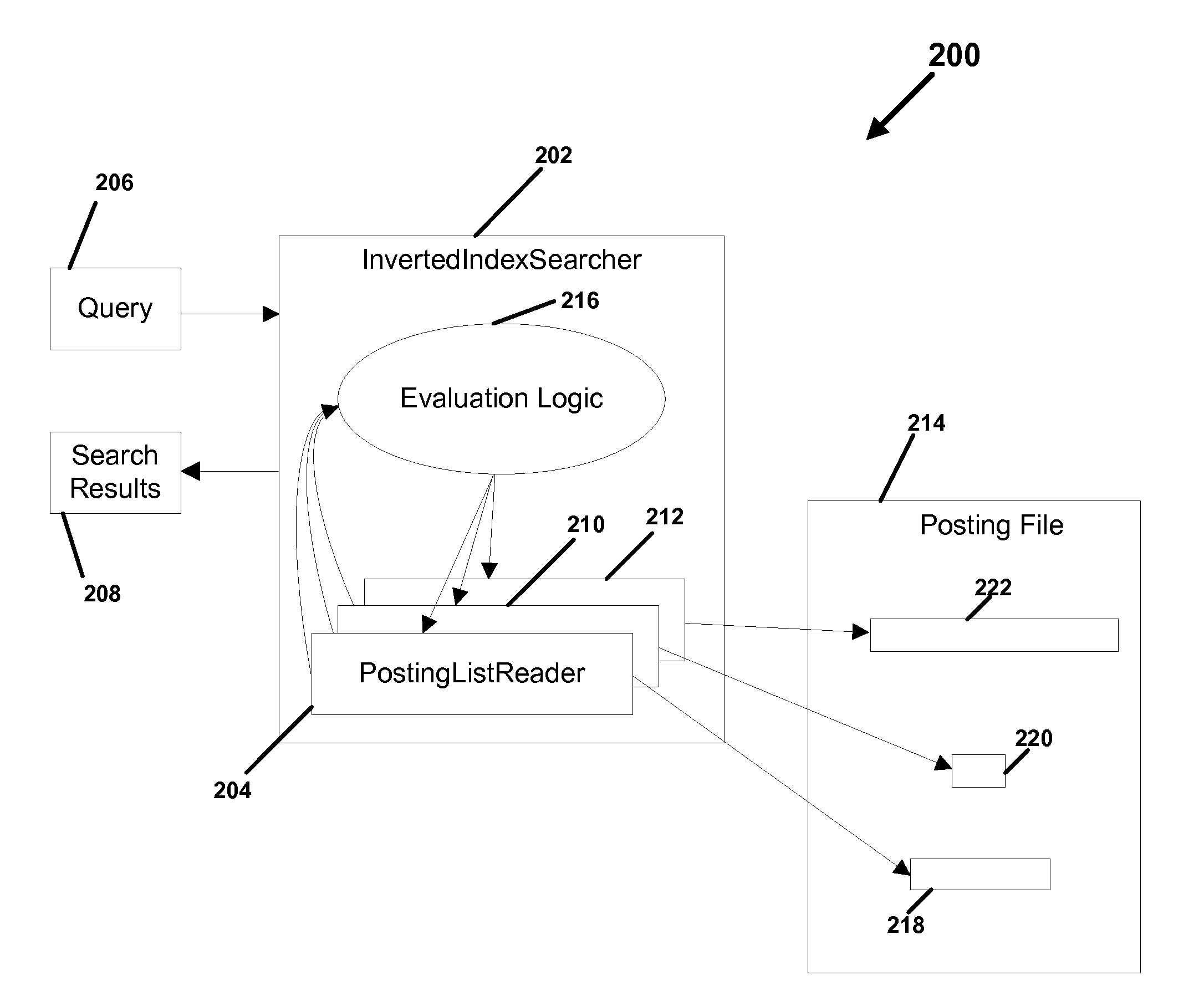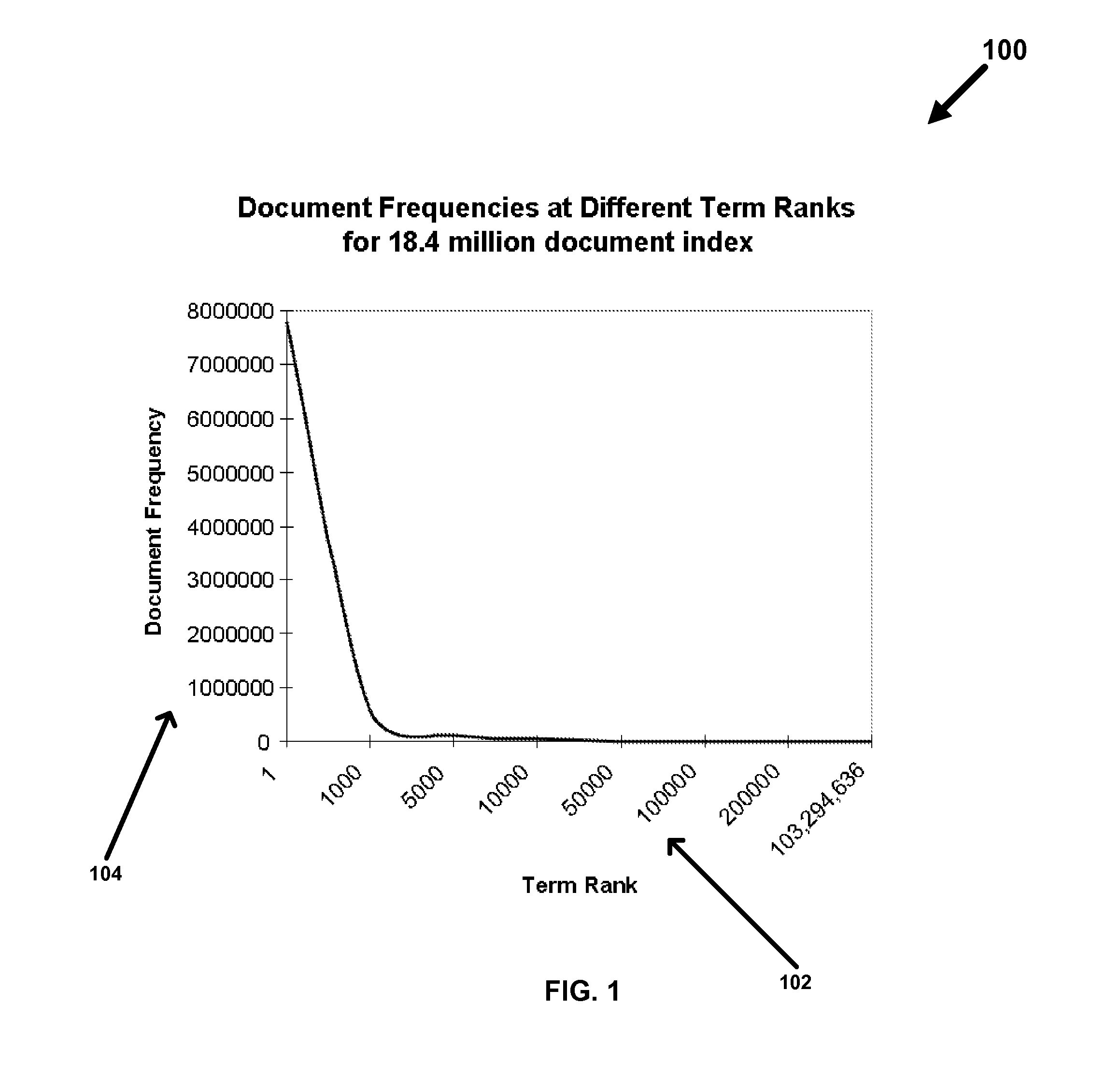Segmenting postings list reader
- Summary
- Abstract
- Description
- Claims
- Application Information
AI Technical Summary
Benefits of technology
Problems solved by technology
Method used
Image
Examples
case 1
[0105]To implement makePreciseBufferFillSizeSelector, there are two cases to consider, where numBytesToRead is the input to makePreciseBufferFillSizeSelector, and maxBufferSize is the largest read system call that can be issued in bytes:[0106]Case 1: maxBufferSize>=numBytesToRead[0107]Case 2: maxBufferSize
[0108]A discussion of these cases follows.
Case 1: maxBufferSize>=numBytesToRead
[0109]Build a one-stage predetermined buffer fill size strategy as indicated below in Table I.
TABLE IStageFill SizeNumber of Times to Use1numBytesToRead1
[0110]The above strategy, when installed in an enhanced buffered reader, will read exactly numBytesToRead bytes of data using a single system call.
case 2
Case 2: maxBufferSize
[0111]In this case, build a predetermined buffer fill size strategy that generally has two stages, as indicated in Table II. However, the second stage is not necessary when the maxBufferSize evenly divides numBytesToRead.
TABLE IIStageFill SizeNumber of Times to Use1maxBufferSizenumBytesToRead / maxBufferSize2numBytesToRead %1maxBufferSize
[0112]The above strategy, when installed in an enhanced buffered reader, will read exactly numBytesToRead bytes of data with the minimum possible number of read system calls.
case 3
[0113]To implement makeApproximateBufferFillSizeSelector, there are two cases to consider, where approximateNumBytesToRead is input to makeApproximateBufferFillSizeSelector, and maxBufferSize is the largest read system call that can be issued in bytes:[0114]Case 3: maxBufferSize>=approximateNumBytesToRead[0115]Case 4: maxBufferSize<approximateNumBytesToRead
Also, recall that a supplementalReadSize is provided as input to makeApproximateBufferFillSizeSelector. A discussion of these cases follows.
Case 3: maxBufferSize>=approximateNumBytesToRead
[0116]Build a two-stage predetermined buffer fill size strategy as indicated below in Table III.
TABLE IIIStageFill SizeNumber of Times to Use1approximateNumBytesToRead12supplementalReadSizeRepeat as necessary
[0117]The above strategy, when installed in an enhanced buffered reader, will read approximateNumBytesToRead bytes of data using a single read system call and thereafter will perform as many additional system calls of the supplemental read si...
PUM
 Login to View More
Login to View More Abstract
Description
Claims
Application Information
 Login to View More
Login to View More - R&D
- Intellectual Property
- Life Sciences
- Materials
- Tech Scout
- Unparalleled Data Quality
- Higher Quality Content
- 60% Fewer Hallucinations
Browse by: Latest US Patents, China's latest patents, Technical Efficacy Thesaurus, Application Domain, Technology Topic, Popular Technical Reports.
© 2025 PatSnap. All rights reserved.Legal|Privacy policy|Modern Slavery Act Transparency Statement|Sitemap|About US| Contact US: help@patsnap.com



